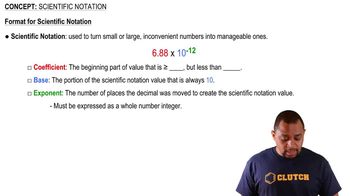A 32.65-g sample of a solid is placed in a flask. Toluene, in which the solid is insoluble, is added to the flask so that the total volume of solid and liquid together is 50.00 mL. The solid and toluene together weigh 58.58 g. The density of toluene at the temperature of the experiment is 0.864 g/mL. What is the density of the solid?
In 2005, J. Robin Warren and Barry J. Marshall shared the Nobel Prize in Medicine for discovering the bacterium Helicobacter pylori and for establishing experimental proof that it plays a major role in gastritis and peptic ulcer disease. The story began when Warren, a pathologist, noticed that bacilli were associated with the tissues taken from patients suffering from ulcers. Look up the history of this case and describe Warren’s first hypothesis. What sorts of evidence were required to establish a credible theory based on it?
 Verified step by step guidance
Verified step by step guidanceKey Concepts
Helicobacter pylori
Hypothesis Formation

Evidence in Scientific Research

Automobile batteries contain sulfuric acid, which is commonly referred to as “battery acid.” Calculate the number of grams of sulfuric acid in 1.00 gal of battery acid if the solution has a density of 1.28 g/mL and is 38.1% sulfuric acid by mass.
Gold is alloyed (mixed) with other metals to increase its hardness in making jewelry. (a) Consider a piece of gold jewelry that weighs 9.85 g and has a volume of 0.675 cm3. The jewelry contains only gold and silver, which have densities of 19.3 and 10.5 g/cm3, respectively. If the total volume of the jewelry is the sum of the volumes of the gold and silver that it contains, calculate the percentage of gold (by mass) in the jewelry. (b) The relative amount of gold in an alloy is commonly expressed in units of carats. Pure gold is 24 carat, and the percentage of gold in an alloy is given as a percentage of this value. For example, an alloy that is 50% gold is 12 carat. State the purity of the gold jewelry in carats.
Judge the following statements as true or false. If you believe a statement to be false, provide a corrected version. (a) Air and water are both elements.
